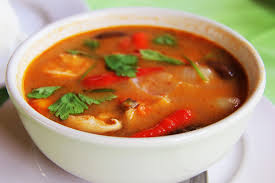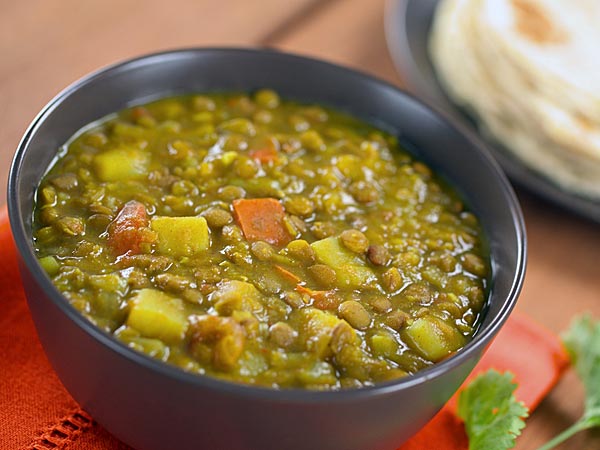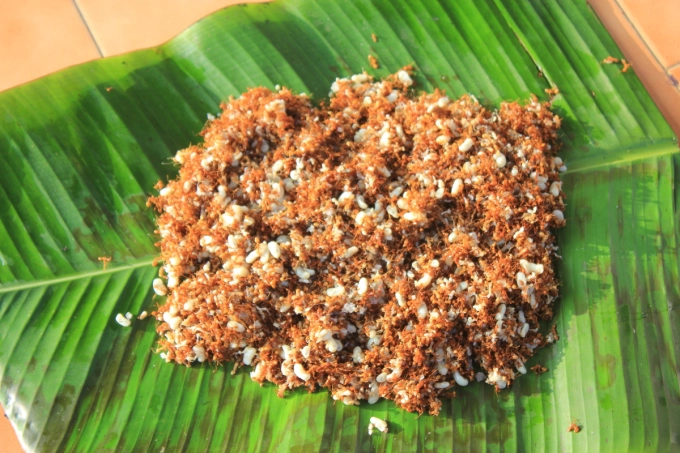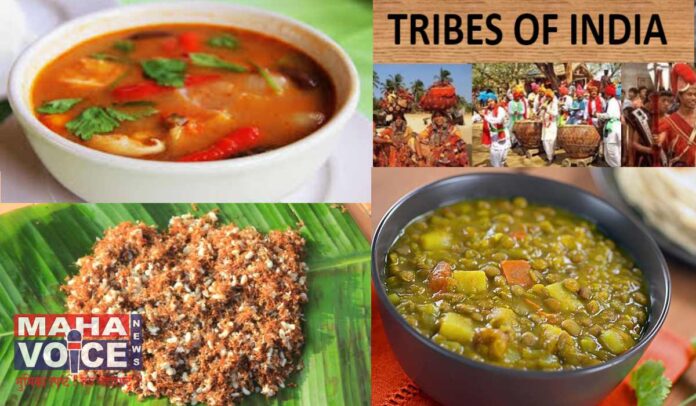By – Dr. Kaviraj Khialani.
A tribe is a group of people who live and work together in a shared geographical area. A tribe has a common culture, dialect, and religion. They also have a strong sense of unity. The tribe is usually headed by a chief.
The term tribe is used in many different contexts to refer to a category of human social group. The predominant worldwide usage of the term in English is in the discipline of anthropology.
Its definition is contested, in part due to conflicting theoretical understandings of social and kinship structures, and also reflecting the problematic application of this concept to extremely diverse human societies.
The concept is often contrasted by anthropologists with other social and kinship groups, being hierarchically larger than a lineage or clan, but smaller than a chiefdom, nation or state. These terms are equally disputed.
In some cases, tribes have legal recognition and some degree of political autonomy from national or federal government, but this legalistic usage of the term may conflict with anthropological definitions.
What is different about the food by the tribes?
The Cuisines of different tribes around the world can vary significantly based on
factors such as their geographical location, cultural practices, available resources, and historical traditions.
Here are some of the key differences you might find in the food of various tribes:
1. Geographical Location: Tribes living in different regions will have access to different types of flora and fauna, which greatly influence their diets. For example, tribes in coastal regions may have a diet rich in seafood, while those in arid regions may rely more on grains and drought-resistant crops.
2. Cultural Practices: The customs and traditions of a tribe play a significant role in their food choices. Some tribes may have specific rituals or ceremonies associated with food preparation and consumption. For example, the Maasai tribe in East Africa is known for its cattle-based diet, and cattle hold deep cultural and symbolic significance for them.
3. Available Resources: Tribes often rely on local resources for their food. This can include hunting, fishing, gathering wild plants, and farming. The types of animals, plants, and agricultural practices available will vary widely from one region to another.
4. Traditional Cooking Methods: Tribes may have unique methods of food preparation, such as cooking over an open flame, using earthen ovens, smoking, or fermenting. These methods can impart distinct flavors and textures to their dishes.
5. Dietary Restrictions: Some tribes may have dietary restrictions based on religious or cultural beliefs. For example, certain tribes may avoid consuming specific animals or plants due to taboos or spiritual reasons.
6. Seasonal Variations: Seasonal changes can also impact the food choices of tribes. They may rely more on preserved or dried foods during harsh winters or have special dishes associated with harvest festivals.
7. Trade and Interaction: Tribes that have historically interacted with neighboring communities may incorporate elements of their cuisines into their own, leading to culinary fusion and the creation of unique dishes.
8. Food Preservation Techniques: Tribes often have traditional methods of food preservation to ensure a stable food supply during lean times. These can include drying, smoking, salting, and fermenting.
9. Adaptation to Modernization: Some tribes may have adapted their diets to incorporate more modern foods due to changes in their way of life or increased interaction with the outside world. This can lead to a blend of traditional and contemporary dishes.
10. Food as a Symbol of Identity: Food can serve as a symbol of tribal identity and solidarity. The preparation and sharing of traditional dishes can play a vital role in preserving cultural heritage.
It’s important to note that the specifics of tribal diets can vary greatly from one group to another, so there is no one-size-fits-all answer. Additionally, the food culture of many tribes is evolving due to factors like globalization, urbanization, and changes in lifestyle. As a result, some traditional foods and practices may be in danger of disappearing.
Where all in India do we fins tribal cooking?
Natural and nutritious, whether cultivated or not, the tribes have always been fond of these since ages. Interestingly most tribal food barely see the use of
spice or very sparingly used. Simplicity of the dishes, using traditional cooking methods happen to the speciality of tribal cuisine. Be it the Dhuska (deep-fried snack made of powdered rice), Red Ant Chapda Chutney, Thapdi Roti, Khapra Roti with Mutton, these dishes that almost sound exotic happen to be everyday dishes for them. From wild fruits, roots and tube, the tribals had mostly being living by collecting foods from across the forest area.
The people, culture and cuisine of the tribals have always been different from those of the mainland people. For them the Seasonal local favourites include indigenous wild plants. The UN General Assembly might have declared 2022 as the International Year of Millets, but our indigenous tribals have been indulging in them for years.
There is a preference of different types of millets that these tribals grow and dishes are Ragi Pakodas and Madwa rotis from Jharkhand, and Ragi Idlis and Dosas from Tamil Nadu are slowly making its mark. Just like the Khadia’s who are not farmers but nomadic hunter gatherers, from time immemorial they have been known for collecting the finest wild honey form the jungles of Odisha.
Moving to the tribes of Jharkhand they boast about their Maize, millets, scores of saag, bamboo shoots and horse gram as a part of their daily meal. While the North-East sees abundance of rice cultivation, Meghalaya takes pride in their Jadoh that is made with pig liver or the Onla Wangkhari from Assam that sees rice flour and chicken stew is a Boho staple and not to miss the Dung Po or steamed rice from Arunachal Pradesh.
Just like North East harps in their rice production and dishes, so does the hills swear by the lentils and wheat in their local/ tribal cuisine. Be it the millet roti or maahni or the teliya maach, these dishes are mostly served in pattal bowl or donna or even kansa thali.
Not to miss that states of Maharashtra, Chattisgarh, Madhya Pradesh and Andhra too have many interesting tribal cuisines. From cornmeal paniya roti that is baked in an open pit-style oven and savoured with some red ant’s chutney to steamed bafle whole wheat dumplings and not miss the variety of mushrooms, tribal food needs to get it’s due importance.
What are the common ingredients used?
Different communities have different food cultures, which often gives an insight into the way of living of these communities. For instance, the food culture of tribals depicts their closeness with nature. Even today, many tribes in India are dependent on forest produce for their food and sustenance.
The growing interests surrounding sustainable living and environmental concerns have prompted research on tribal communities and their food habits. Fruits, millets and tuberous food like elephant yams have been some common food items of tribals residing in the southern parts of India, although food cultures vary across different tribes.
Tribal food culture is heavily dependent upon the seasonal availability of various food items. Items such as cereals and mushrooms are usually consumed during the summer season. During winter, potatoes and yams are preferred. Also, during the winter season, people usually consume boiled food.
Additionally, the tribal communities follow the tradition of consuming seasonal vegetables. While a lot of greens are gathered from forests, these communities also cultivate seasonal vegetation for consumption. Spinach is a popular food item amongst tribal communities of south India. It is a customary practice to include spinach in their daily food.
Mushrooms, a seasonal food item of the tribal communities of south India;
The tribal food culture also includes a lot of meat. Due to their dependence on nature, they have traditionally consumed fish, crabs, snails, etc, that are found abundantly in water resources.
However, it should be noted that these food items have predominantly been for self-consumption and not commercial purposes, due to which wastage and overutilization of resources have been avoided, enabling these communities to practice sustainable living. Apart from these tribal communities have also been involved in cattle rearing and farming. Hence, goats, chickens, etc., have been a constant source of food for them.
What are the method of cooking applied?
Cooked with very few spices and mostly had raw, semi-cooked, roasted or fermented – these tribal dishes preserve the flavours of the ingredients. “Simplicity of ingredients and cooking methods are the mainstays of tribal cuisine.
Salt and chillies would be crushed using fingers and mixed with rice. Rice would be served on the centre of the leaf accompanied by dishes called kula curry and poothi curry. Meat dishes are served only on the left side of the rice. The kuruma tribes use a special vessel called ‘manthalam’ to cook and serve food.
Here are a few recipes from the tribal lands with method and recipe pictures.
1] Bamboo Shoot Curry (Bamboo Shoot Bharta)

Ingredients:
- 1 cup bamboo shoots, thinly sliced and boiled until tender
- 2 tablespoons mustard oil (or any cooking oil)
- 1 medium onion, finely chopped
- 2 cloves garlic, minced
- 1-inch piece of ginger, grated
- 1 green chili, finely chopped (adjust to taste)
- 1 teaspoon turmeric powder
- 1 teaspoon cumin powder
- 1 teaspoon coriander powder
- Salt to taste
- Fresh coriander leaves for garnish
Instructions :
1. Heat oil in a pan. Add chopped onions and sauté until they turn golden brown.
2. Add minced garlic, grated ginger, and green chili. Sauté for a couple of minutes until fragrant.
3. Add turmeric, cumin, and coriander powders. Stir well.
4. Add the boiled bamboo shoots and mix thoroughly with the spices.
5. Season with salt and cook for about 5-7 minutes on low heat.
6. Garnish with fresh coriander leaves and serve with steamed rice.
2] Tribal-Style Black Lentil Curry (Dalma)

Ingredients:
- 1 cup black lentils (urad dal), soaked overnight
- 1 large potato, diced
- 1 medium raw banana, diced
- 1 small brinjal (eggplant), diced
- 1 tomato, chopped
- 1 tablespoon mustard oil (or any cooking oil)
- 1 teaspoon mustard seeds
- 1 teaspoon cumin seeds
- 1 teaspoon turmeric powder
- 2-3 dried red chilies
- Salt to taste
- Fresh coriander leaves for garnish
Instructions:
1. Pressure cook the soaked black lentils with diced potato, banana, and brinjal until soft and well-cooked.
2. In a separate pan, heat mustard oil until it starts to smoke, then lower the heat.
3. Add mustard seeds, cumin seeds, and dried red chilies. Allow them to splutter.
4. Add chopped tomatoes and cook until they turn soft and pulpy.
5. Add turmeric powder and cook for another minute.
6. Pour the cooked lentils and vegetables into the pan. Add salt and let it simmer for about 10-15 minutes.
7. Garnish with fresh coriander leaves and serve hot with steamed rice. These recipes are inspired by tribal cuisine from different regions of India. Remember, variations might exist within different tribal communities, so feel free to adapt these recipes to your taste. Enjoy!
3] Chapda Chutney

Chapda chutney is a popular chutney from the Indian state of Assam. It is made using fermented bamboo shoots and has a unique and tangy flavor. Here’s a traditional recipe for Chapda Chutney:
Ingredients:
- 1 cup fermented bamboo shoots (chapda)
- 2-3 green chilies, chopped (adjust to taste)
- 2-3 cloves of garlic, minced
- 1 small onion, finely chopped
- 1 tomato, finely chopped
- 1/2 teaspoon mustard seeds
- 1/2 teaspoon cumin seeds
- A pinch of asafoetida (hing)
- 1/2 teaspoon turmeric powder
- Salt to taste
- 2 tablespoons mustard oil
- Fresh coriander leaves for garnish (optional)
Instructions:
- Start by rinsing the fermented bamboo shoots (chapda) thoroughly under running water to remove any excess salt. Drain and chop them into small pieces.
- Heat the mustard oil in a pan until it begins to smoke. Then, reduce the heat to low and add mustard seeds, cumin seeds, and a pinch of asafoetida (hing).
- Allow the seeds to splutter and release their aroma.
- Add the chopped garlic and green chilies to the pan. Sauté for a minute or until the garlic turns slightly golden.
- Add the finely chopped onion and sauté until it becomes translucent.
- Stir in the turmeric powder and chopped tomatoes. Cook until the tomatoes become soft and the oil starts to separate.
- Add the chopped bamboo shoots (chapda) to the pan and mix well with the other ingredients.
- Cook for about 5-7 minutes, allowing the bamboo shoots to absorb the flavors.
- Season with salt to taste and continue to cook for another 5 minutes.
- 10.Remove the pan from the heat and let the Chapda Chutney cool to room temperature.
- Garnish with fresh coriander leaves if desired.
- Serve your homemade Assamese Chapda Chutney as a side dish with steamed rice or other Assamese delicacies.
- Enjoy the unique and tangy flavors of Chapda Chutney, a traditional Assamese accompaniment that adds a delightful twist to your meals.
4] Mahua laddu

Mahua Laddu is a traditional Indian sweet made from the flowers of the mahua tree. Here’s a simple recipe for making Mahua Laddu:
Ingredients:
- 2 cups fresh mahua flowers (cleaned and petals separated)
- 1 cup grated jaggery (gur)
- 1/2 cup desiccated coconut
- 1/4 cup chopped nuts (cashews, almonds, or your choice)
- 1/4 cup ghee (clarified butter)
- 1/2 teaspoon cardamom powder
Instructions:
1. Begin by cleaning the mahua flowers. Remove any unwanted parts and wash the petals thoroughly to remove any dirt or impurities. Allow them to air dry completely.
2. Once the mahua flower petals are dry, grind them into a fine powder using a grinder or food processor.
3. Heat the ghee in a heavy-bottomed pan or skillet over medium-low heat.
4. Add the powdered mahua flowers to the pan and roast them gently in the ghee for about 5-7 minutes. Stir continuously to avoid burning. The petals will turn slightly brown and become fragrant.
5. Add the grated jaggery to the roasted mahua flower powder. Mix well and continue to cook on low heat until the jaggery melts and combines with the powder. The mixture will become sticky.
6. Stir in the desiccated coconut, chopped nuts, and cardamom powder. Mix thoroughly to combine all the ingredients.
7. Turn off the heat and let the mixture cool slightly, so you can handle it comfortably.
8. Grease your hands with a little ghee to prevent sticking, then shape the mixture into small, round laddus (balls). You can make them as big or as small as you like.
9. Allow the Mahua Laddus to cool completely, and they will firm up as they cool down. 10. Store the laddus in an airtight container. They can be stored at room temperature for several days. Mahua Laddu is a unique and delightful sweet with a distinct flavor from the mahua flowers. Enjoy these laddus as a traditional Indian treat.
How can the hospitality industry create more awareness about the tribal cooking and culture in today`s times ?
Creating awareness about tribal cooking and culture in the hospitality industry
requires a thoughtful and respectful approach. Here are several strategies that
the industry can employ:
Collaboration with Tribal Communities:
Establish partnerships and collaborations with local tribal communities. Engage in open and respectful dialogue to understand their cultural practices and culinary traditions.
Cultural Sensitivity Training:
Train staff in cultural sensitivity and diversity to ensure that interactions with
tribal communities are respectful and inclusive.
Diverse Workforce:
Hire employees from tribal backgrounds to work in the industry. This not only
promotes diversity but also ensures authentic representation.
Tribal-Themed Events:
Organize special events or festivals dedicated to tribal cuisine and culture. These events can include traditional dance performances, storytelling, and cooking demonstrations.
Menu Inclusion:
Include tribal dishes on the menu of hotels, restaurants, and cafes. Collaborate with tribal chefs or home cooks to ensure authenticity.
Educational Workshops:
Host workshops or cooking classes that teach guests about tribal cooking techniques, ingredients, and the significance of certain dishes.
Storytelling and Documentation:
Create informative materials, such as brochures, videos, or websites, that tell the stories of tribal communities, their history, and their culinary traditions.
Ethical Sourcing:
When sourcing ingredients for tribal dishes, prioritize ethical and sustainable practices. Consider sourcing directly from tribal producers where possible.
Cultural Experiences:
Offer guests the opportunity to visit tribal communities, participate in traditional activities, and share meals with tribal members.
Social Media and Marketing:
Utilize social media platforms and marketing campaigns to showcase tribal cuisine and culture. Share photos, videos, and personal stories to create intrigue and curiosity.
Support Tribal Initiatives:
Collaborate with tribal communities on initiatives such as food festivals, art exhibitions, or cultural exchanges. Part of the profits can be directed towards supporting tribal development projects.
Feedback and Adaptation:
Continuously seek feedback from tribal communities and guests to improve your approach. Be open to making adjustments based on their input.
Sustainability and Conservation:
Emphasize the importance of sustainable practices and conservation efforts in tribal cooking and culture, highlighting their unique relationship with nature.
Advocacy and Policy Support:
Advocate for policies that protect tribal lands, cultures, and traditional knowledge. This can include supporting land rights, intellectual property rights, and cultural preservation efforts.
Engage with Local Schools and Universities:
Collaborate with educational institutions to offer courses, workshops, or internships related to tribal culture and cuisine, helping to educate future hospitality professionals.
Conclusion
Tribal cuisines of India are diverse and rich in flavours. They often incorporate locally available ingredients and cooking techniques passed down through generations. These cuisines showcase the unique culinary traditions and cultural heritage of different tribal communities across India.
From bamboo shoots to wild mushrooms, each region has its own specialties that offer a delightful gastronomic experience. Exploring tribal cuisines is a wonderful way to appreciate the diversity and richness of Indian culinary heritage.



